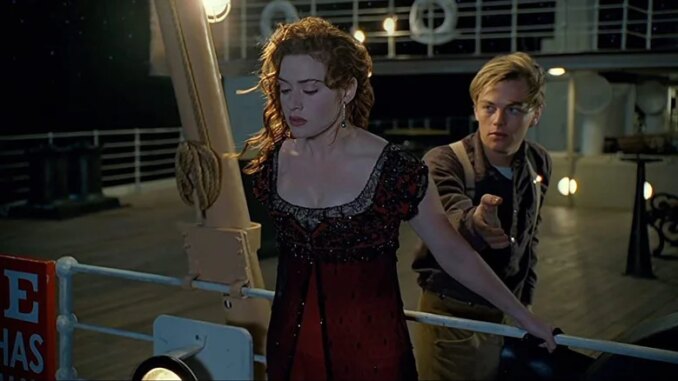
The Frozen Truth: Why Jack's Rescue of Rose Took So Long to Shoot in Titanic
James Cameron's "Titanic" is a cinematic behemoth, a historical epic woven with a poignant love story that has captured hearts for generations. But beneath the grand sets, the lavish costumes, and the sweeping score, lies a story of painstaking production, a story that explains why certain scenes, seemingly simple in their emotional weight, took an eternity to bring to life. The iconic scene where Jack rescues Rose from the icy grip of the Atlantic, a pivotal moment solidifying their bond and foreshadowing their tragic fate, is a prime example. The reason this rescue took so long to shoot wasn't merely logistical; it was a confluence of factors, a perfect storm of artistic vision, technical challenges, and the relentless pursuit of realism that defines Cameron's filmmaking.
One of the most significant hurdles was the pursuit of verisimilitude. Cameron wasn't content with merely implying the frigid conditions. He demanded that the actors feel the bite of the icy water, pushing their physical and emotional limits to create a believable portrayal of hypothermia and desperation. This commitment to realism translated into long hours spent in massive water tanks, meticulously chilled to mimic the near-freezing temperatures of the North Atlantic. Kate Winslet famously refused to wear a wetsuit, determined to fully immerse herself in the experience, adding to the challenge and, inevitably, extending the shooting time.
This wasn't just about suffering for art. The cold impacted everything. Dialogue delivery became more labored, movements more sluggish, and the actors' physical reactions – the chattering teeth, the shivering limbs, the labored breathing – became critical components of the scene's impact. Capturing these authentic reactions required multiple takes, often repeated until the desired level of emotional vulnerability and physical distress was achieved. The crew, wrapped in layers of protective clothing, wrestled with the logistics of filming in such harsh conditions, further slowing the process.
Beyond the actors' ordeal, the technical complexities of the scene added another layer of challenges. The vast tank, designed to replicate the debris-strewn ocean surface, was a complex piece of engineering. Maintaining the correct water level, controlling the debris flow, and ensuring the safety of the actors all required meticulous planning and execution. Furthermore, the scene involved intricate underwater cinematography, requiring specialized equipment and skilled divers to navigate the murky depths. Capturing the right angles, lighting the scene effectively, and coordinating the actors' movements underwater proved to be a time-consuming process, demanding patience and precision from the entire crew.
Cameron's perfectionism, while a driving force behind the film's success, also contributed to the extended shooting time. He is known for his meticulous attention to detail, his relentless pursuit of the perfect shot, and his willingness to push the boundaries of filmmaking technology. In the rescue scene, this manifested in endless adjustments to the lighting, the composition, and the actors' performances. He would scrutinize every detail, demanding subtle changes that, while seemingly insignificant, contributed to the overall emotional impact of the scene. This iterative process, while frustrating at times, ultimately resulted in a scene that resonates with audiences on a visceral level.
Finally, the scene's importance to the narrative arc of the film cannot be overlooked. The rescue wasn't just a physical act; it was a symbolic representation of Jack's unwavering commitment to Rose and the burgeoning love that would ultimately define their lives. This scene served as a crucial turning point, solidifying their connection and foreshadowing the ultimate sacrifice Jack would make for Rose. Therefore, Cameron felt immense pressure to get it right, to capture the raw emotion and vulnerability that would resonate with audiences and make their subsequent tragedy all the more heartbreaking.
In conclusion, the extended shooting time for Jack's rescue of Rose in "Titanic" was not simply a matter of technical difficulties. It was a complex interplay of factors: the relentless pursuit of realism, the physical challenges of filming in frigid conditions, the technical complexities of underwater cinematography, Cameron's unwavering perfectionism, and the scene's crucial role in the narrative arc of the film. This combination of elements transformed a seemingly simple rescue into a monumental undertaking, a testament to the dedication and artistic vision that made "Titanic" the cultural phenomenon it is today. The frozen truth is that behind the iconic image of Jack pulling Rose from the icy water lies a story of painstaking effort, pushing the boundaries of filmmaking to create a moment that continues to captivate and move audiences worldwide.
